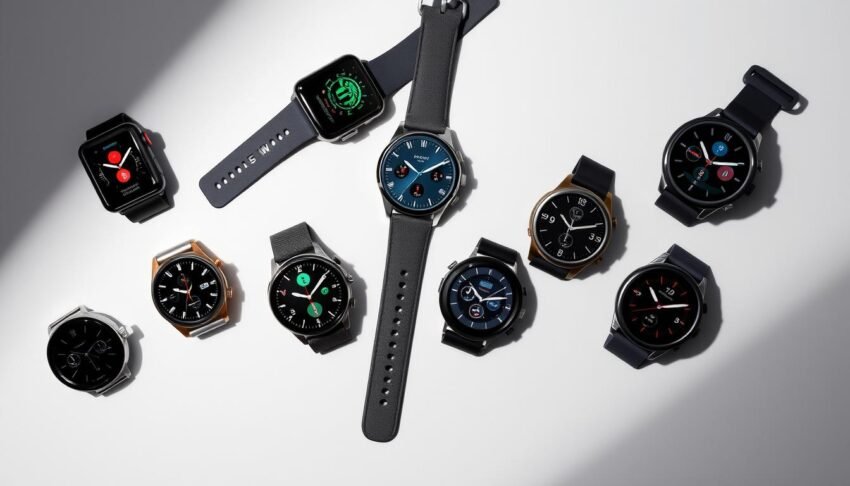If you purchase through these links, we may earn a small commission at no extra cost to you.
This helps support our work and allows us to keep testing and reviewing the best tech products of 2025.
Best Smartwatches 2025: At a Glance
| Model | Best For | Battery Life | Price Range | Compatibility |
| Apple Watch Ultra 3 | Overall Performance | Up to 3 days | $799-$899 | iOS only |
| Samsung Galaxy Watch 8 | Android Users | Up to 30 hours | $349-$399 | Android only |
| Google Pixel Watch 4 | Wear OS Experience | Up to 36 hours | $399-$449 | Android only |
| OnePlus Watch 3 | Battery Life | Up to 120 hours | $329-$379 | Android only |
| Garmin Venu X1 | Fitness Tracking | Up to 7 days | $449-$499 | iOS & Android |
| Apple Watch SE 3 | Budget Apple Users | Up to 24 hours | $249-$299 | iOS only |
| Huawei Watch Fit 4 | Affordable Option | Up to 10 days | $119-$149 | iOS & Android |
| Amazfit Active 2 | Budget Conscious | Up to 10 days | $99-$129 | iOS & Android |
How We Tested These Smartwatches
Our testing methodology involves using each smartwatch as a daily driver for at least two weeks. We evaluate battery performance under various usage scenarios, test health tracking accuracy against medical-grade devices, and assess real-world GPS precision during outdoor activities. We also consider build quality, display performance, software experience, and overall value proposition.
For 2025 models, we’ve placed special emphasis on evaluating AI features, health monitoring accuracy, and battery efficiency improvements compared to previous generations. Our team includes tech enthusiasts, fitness professionals, and everyday users to provide a well-rounded perspective on each device.
Apple Watch Ultra 3
Best Overall Smartwatch (iOS Only)
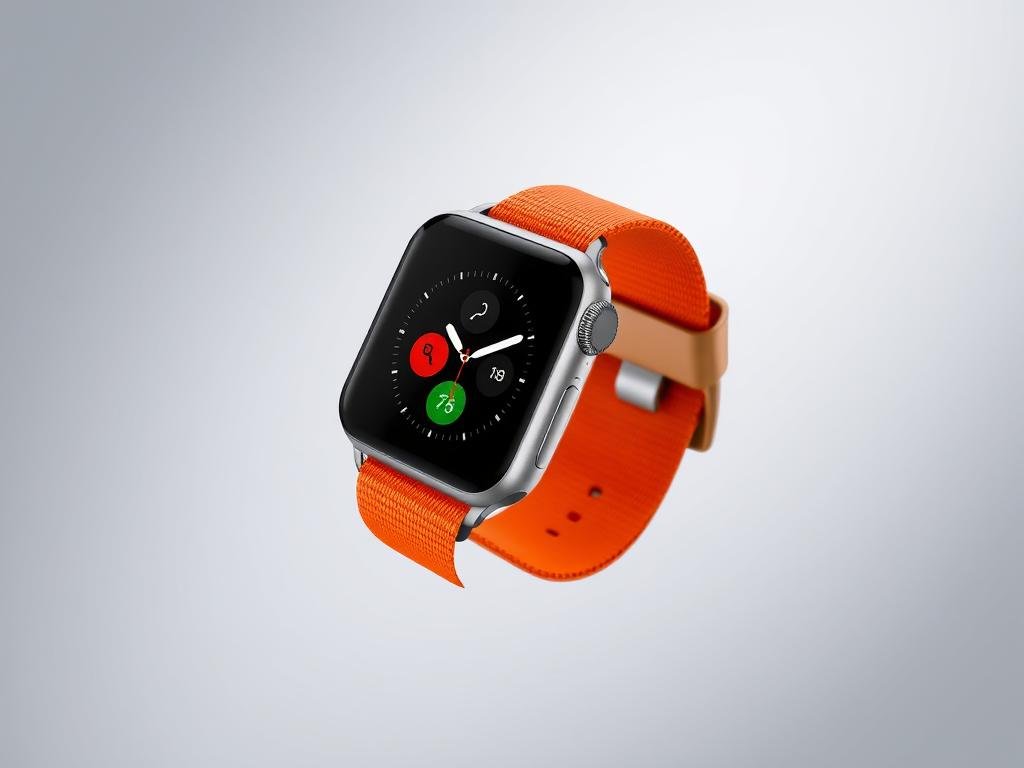
The Apple Watch Ultra 3 builds upon its predecessors’ foundation with meaningful upgrades that cement its position as the best overall smartwatch of 2025. The third-generation Ultra maintains the distinctive titanium case design but now comes in a new darker “Midnight Titanium” finish alongside the original natural color.
The standout feature is the new S10 chip, which delivers 30% faster performance while enabling more efficient battery management. In our testing, we consistently achieved 2.5-3 days of battery life with normal use—a significant improvement over previous models. The Ultra-bright display now reaches 3,500 nits, making it exceptionally readable even in direct sunlight.
Health monitoring capabilities have expanded with the addition of blood pressure monitoring and enhanced sleep apnea detection. The dual-frequency GPS remains industry-leading, with remarkable accuracy even in challenging urban environments. Outdoor enthusiasts will appreciate the improved topographic maps and enhanced Backtrack feature.
Pros
- Exceptional build quality with premium materials
- Best-in-class bright display (3,500 nits)
- Improved 2.5-3 day battery life
- Comprehensive health monitoring including blood pressure
- Unmatched GPS accuracy with dual-frequency support
Cons
- Premium price point ($799+)
- iOS compatibility only
- Large 49mm case may be too bulky for smaller wrists
- Some health features require subscription
Ready to Experience the Ultimate Apple Watch?
The Apple Watch Ultra 3 represents the pinnacle of Apple’s wearable technology, perfect for iOS users who want the absolute best in performance and durability.
Samsung Galaxy Watch 8
Best Smartwatch for Android Users
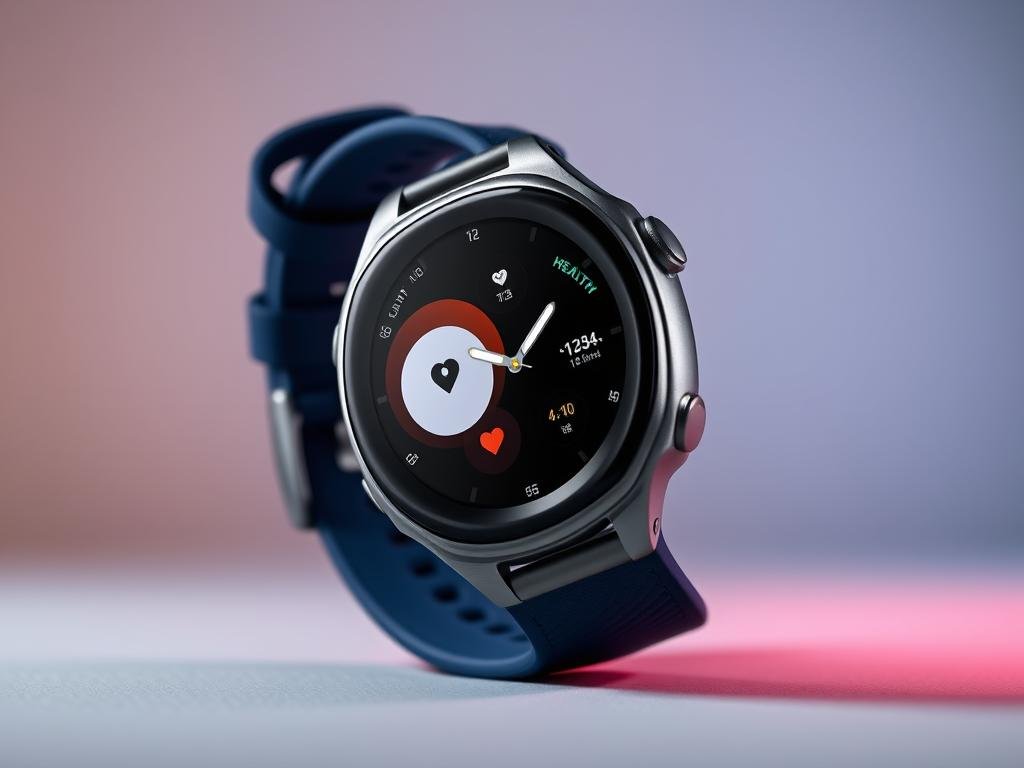
The Samsung Galaxy Watch 8 represents a significant evolution in Samsung’s wearable lineup, adopting the cushion case design first introduced in the Galaxy Watch Ultra. Available in 40mm and 44mm sizes, it strikes an excellent balance between sophisticated aesthetics and practical functionality.
Powered by the Exynos W1000 processor and running Wear OS 6 with One UI Watch 6, the Galaxy Watch 8 delivers a fluid, responsive experience. The Super AMOLED display is brighter than ever at 2,000 nits and offers exceptional color reproduction and visibility in all lighting conditions.
The health monitoring suite is comprehensive, including ECG, blood pressure monitoring, body composition analysis, and the new Antioxidant Index. Sleep tracking is particularly impressive, with detailed sleep stage analysis and actionable insights through the Samsung Health app.
Pros
- Elegant cushion case design in multiple sizes
- Vibrant Super AMOLED display (2,000 nits)
- Comprehensive health monitoring suite
- Google Gemini AI integration
- Excellent software optimization
Cons
- Battery life still limited to about 30 hours
- Some health features exclusive to Samsung phones
- No iOS compatibility
- Premium pricing compared to competitors
The Perfect Companion for Your Android Phone
Experience the most refined Samsung smartwatch to date with the Galaxy Watch 8, featuring the perfect blend of style, performance, and health monitoring capabilities.
Google Pixel Watch 4
Best Google Experience
The Google Pixel Watch 4 refines the minimalist circular design that made its predecessors stand out while addressing key limitations. Now available in both 41mm and 45mm sizes, it caters to a wider range of wrist sizes and preferences. The domed glass display seamlessly blends into the aluminum case, creating a distinctively elegant aesthetic.
Performance has been significantly enhanced with the new Snapdragon W5 chip paired with Google’s custom Tensor co-processor, resulting in smoother animations and faster app loading. Battery life has improved to a reliable 36 hours with the always-on display enabled, and up to 48 hours with power-saving features activated.
The Fitbit integration continues to be a highlight, with the Pixel Watch 4 offering detailed health metrics, workout tracking, and sleep analysis. New for 2025 is the addition of blood oxygen monitoring and an upgraded heart rate sensor that rivals medical-grade devices in accuracy.
Pros
- Elegant, minimalist design in two size options
- Improved battery life (up to 36 hours)
- Excellent Fitbit health and fitness integration
- Smooth, responsive Wear OS experience
- High-accuracy heart rate monitoring
Cons
- Proprietary band attachment system
- Premium pricing
- No iOS compatibility
- Some Fitbit features require subscription
Experience Google’s Best Wearable Yet
The Pixel Watch 4 delivers the purest Google experience on your wrist with seamless integration with Pixel phones and the broader Google ecosystem.
OnePlus Watch 3
Best Battery Life in a Wear OS Watch
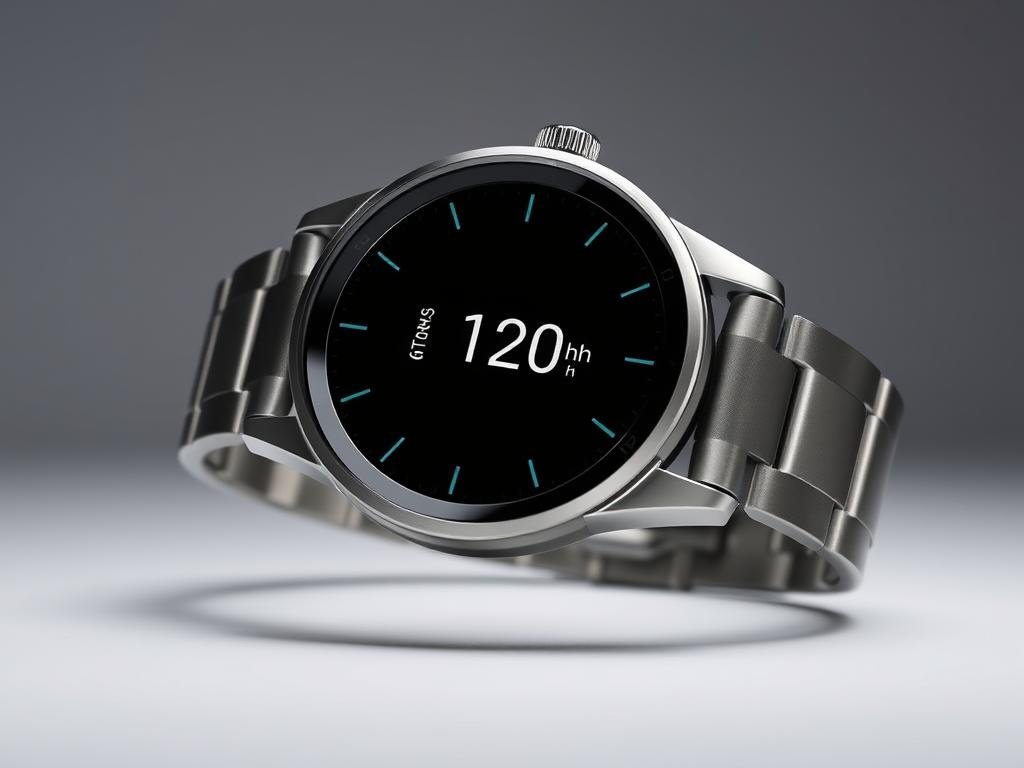
The OnePlus Watch 3 stands out in the crowded Wear OS market by solving the platform’s biggest weakness: battery life. With an astonishing 120 hours (5 days) of typical use between charges, it outperforms every other Wear OS watch by a significant margin while maintaining full functionality.
This impressive endurance comes from OnePlus’s dual-chip architecture, which combines the Snapdragon W5 for performance with a BES2800 efficiency chip for background tasks. The 1.43-inch AMOLED display is bright and vibrant, with a 466 x 466 resolution that ensures crisp text and graphics.
Despite its focus on battery life, the OnePlus Watch 3 doesn’t compromise on features. It offers comprehensive health tracking, including heart rate, SpO2, stress monitoring, and sleep analysis. The fitness tracking capabilities are robust, with support for over 100 workout types and automatic workout detection.
Pros
- Exceptional battery life (up to 120 hours)
- Premium build with titanium and stainless steel
- Bright, vibrant AMOLED display
- Full Wear OS app ecosystem
- Competitive pricing for the features
Cons
- Relatively large and heavy
- No LTE option (yet)
- Some inconsistencies in swim tracking
- Limited availability in some regions
Say Goodbye to Daily Charging
Experience the freedom of a full-featured Wear OS smartwatch that can last nearly a week on a single charge with the OnePlus Watch 3.
Garmin Venu X1
Best for Serious Fitness Enthusiasts
The Garmin Venu X1 represents a significant design departure for Garmin, with an ultra-thin 7.9mm titanium case that looks and feels more like a premium smartwatch than a traditional sports watch. Despite its sleek profile, it packs Garmin’s full suite of advanced training metrics and health monitoring capabilities.
The AMOLED display is bright and colorful, with excellent visibility in all conditions. Battery life is impressive for such a thin device, offering up to 7 days in smartwatch mode and 20 hours with GPS active. The built-in maps and navigation features are excellent, making it ideal for outdoor adventures.
Where the Venu X1 truly excels is in its fitness tracking capabilities. It offers detailed metrics like Training Status, Running Tolerance, Endurance Score, and recovery recommendations based on your performance and biometric data. The accuracy of both GPS tracking and heart rate monitoring is outstanding, rivaling dedicated sports watches.
Pros
- Ultra-thin, premium design (7.9mm)
- Comprehensive fitness and training metrics
- Excellent GPS and heart rate accuracy
- Built-in maps and navigation
- Practical LED flashlight feature
Cons
- Limited smartwatch features compared to Apple/Samsung
- Battery life shorter than typical Garmin watches
- No ECG or dual-frequency GPS
- Premium pricing
Elevate Your Training
Take your fitness journey to the next level with the Garmin Venu X1, combining premium design with professional-grade training insights.
Apple Watch SE 3
Best Budget Apple Watch
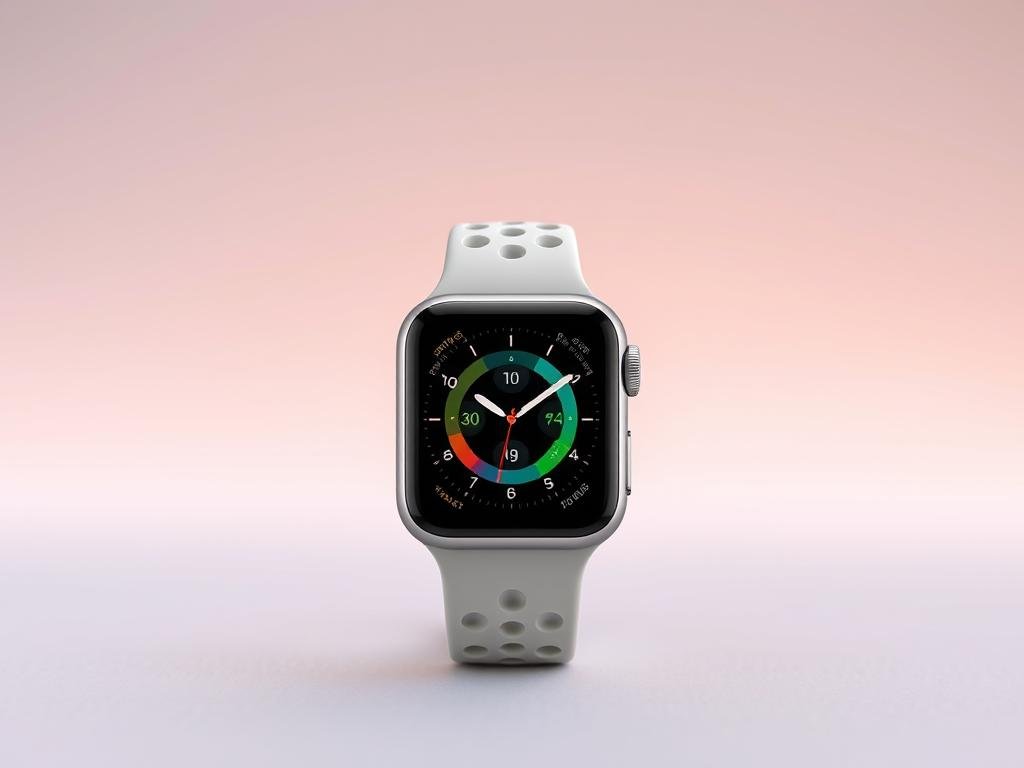
The Apple Watch SE 3 continues Apple’s tradition of offering an affordable entry point into its ecosystem without compromising on essential features. The 2025 model maintains the familiar design language but now incorporates the S9 chip from the Series 9, providing significantly improved performance and efficiency.
Available in 40mm and 44mm sizes, the SE 3 features an aluminum case with a more durable glass covering than its predecessor. The display is bright and responsive, though it still lacks the always-on functionality found in higher-end models. Battery life has been improved to a reliable 24 hours, with a power reserve mode that can extend it to 36 hours.
Core health and fitness tracking features are well-represented, including heart rate monitoring, sleep tracking, activity tracking, and fall detection. New for the SE 3 is the addition of the temperature sensor, enabling more detailed cycle tracking and improved sleep insights.
Pros
- Excellent value for iOS users
- Improved performance with S9 chip
- Better battery life than previous SE models
- Core health and fitness tracking features
- Full access to Apple’s app ecosystem
Cons
- No always-on display
- Lacks advanced health sensors (ECG, blood oxygen)
- iOS compatibility only
- Dated design compared to Series models
Apple Quality at an Affordable Price
Experience the essential Apple Watch features without breaking the bank with the SE 3, perfect for first-time smartwatch users or budget-conscious upgraders.
Huawei Watch Fit 4
Best Affordable Fitness Tracker with Smartwatch Features
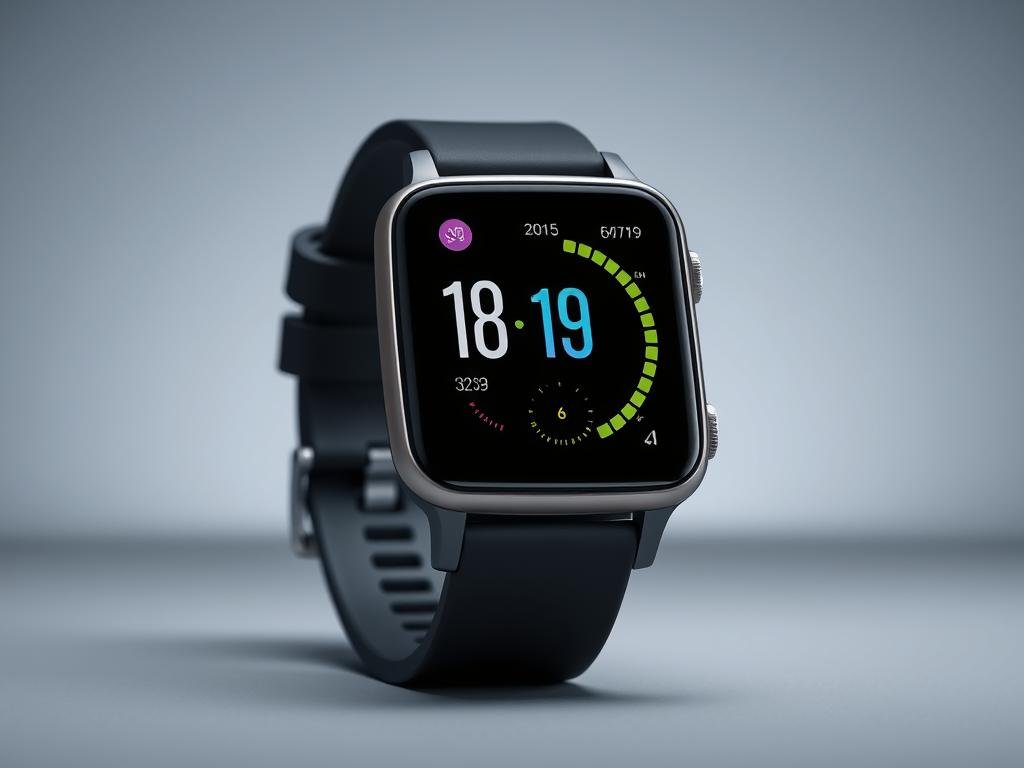
The Huawei Watch Fit 4 builds on the success of its predecessors with a refined design and expanded feature set that blurs the line between fitness tracker and smartwatch. The rectangular 1.74-inch AMOLED display is bright and vibrant, with excellent visibility even in direct sunlight.
Battery life is a standout feature, with up to 10 days of typical use between charges. Even with the always-on display enabled, you can expect 5-7 days of battery life, far surpassing most competitors in this price range. The charging is quick too, with a 5-minute charge providing enough power for a full day of use.
Fitness tracking capabilities are comprehensive, with support for over 100 workout types, automatic workout detection, and detailed metrics for running, cycling, swimming, and more. Health monitoring includes 24/7 heart rate tracking, SpO2 monitoring, stress tracking, and sleep analysis with actionable insights.
Pros
- Exceptional battery life (up to 10 days)
- Bright, vibrant AMOLED display
- Comprehensive fitness and health tracking
- Slim, lightweight design
- Excellent value for money
Cons
- Limited third-party app support
- No voice assistant
- Basic smartwatch functionality
- NFC payments not available in all regions
Fitness Tracking Without Breaking the Bank
Get comprehensive fitness tracking and essential smartwatch features at an affordable price with the Huawei Watch Fit 4.
Amazfit Active 2
Best Budget Smartwatch Overall
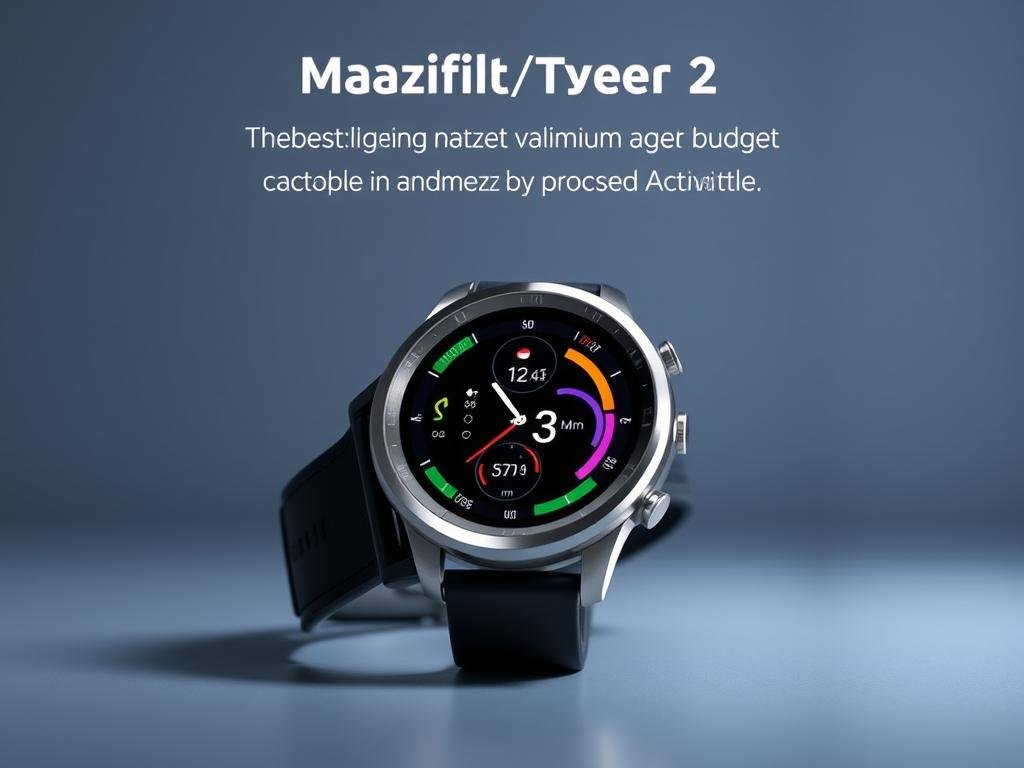
The Amazfit Active 2 delivers exceptional value at just $99, offering features and build quality that rival devices costing two or three times as much. The stainless steel design gives it a premium look and feel, while the 1.32-inch AMOLED display is bright, colorful, and responsive.
Battery life is impressive, with up to 10 days of typical use between charges. The Zepp OS provides a smooth, intuitive interface with essential smartwatch features like notifications, weather updates, music control, and more. While the app ecosystem is limited compared to Apple or Wear OS, the core functionality covers most users’ needs.
Health and fitness tracking capabilities are comprehensive, with 24/7 heart rate monitoring, SpO2 measurement, stress tracking, and sleep analysis. The watch supports 164 sport modes with automatic detection for common activities, and the GPS accuracy is surprisingly good for a budget device.
Pros
- Exceptional value at $99
- Premium design with stainless steel elements
- Excellent battery life (up to 10 days)
- Comprehensive health and fitness tracking
- Works with both iOS and Android
Cons
- Limited third-party app support
- NFC payments cost extra ($30)
- Strength training features need refinement
- Some fit issues reported
Premium Features at a Budget Price
Experience the look and feel of a premium smartwatch without the premium price tag with the Amazfit Active 2.
Smartwatch Comparison: Key Features
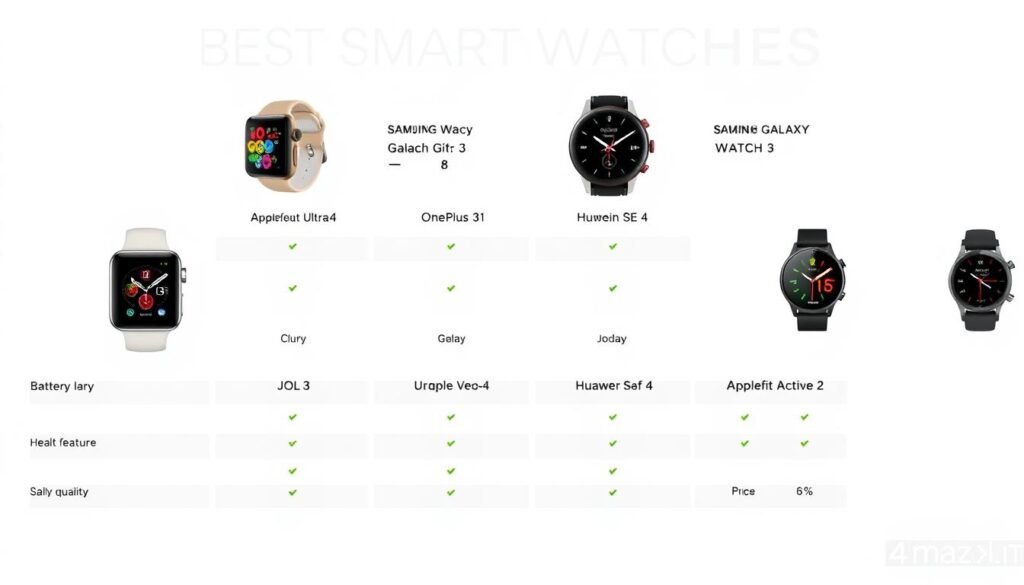
| Feature | Apple Watch Ultra 3 | Samsung Galaxy Watch 8 | Google Pixel Watch 4 | OnePlus Watch 3 |
| Health Sensors | ECG, Blood Pressure, Blood Oxygen, Temperature, Sleep Apnea | ECG, Blood Pressure, Blood Oxygen, BIA, Temperature | ECG, Blood Oxygen, Heart Rate, Temperature | Blood Oxygen, Heart Rate, Stress |
| Battery Life | Up to 3 days | Up to 30 hours | Up to 36 hours | Up to 120 hours |
| Display | OLED, 3,500 nits | AMOLED, 2,000 nits | AMOLED, 1,500 nits | AMOLED, 1,000 nits |
| GPS | Dual-frequency | Multi-GNSS | L1 + L5 | 5 satellite systems |
| Water Resistance | 100m | 50m | 50m | 50m |
| Feature | Garmin Venu X1 | Apple Watch SE 3 | Huawei Watch Fit 4 | Amazfit Active 2 |
| Health Sensors | Heart Rate, Blood Oxygen, Respiration, Stress | Heart Rate, Temperature | Heart Rate, Blood Oxygen, Temperature | Heart Rate, Blood Oxygen, Stress |
| Battery Life | Up to 7 days | Up to 24 hours | Up to 10 days | Up to 10 days |
| Display | AMOLED, 1,000 nits | OLED, 1,000 nits | AMOLED, 800 nits | AMOLED, 600 nits |
| GPS | Multi-GNSS | GPS/GLONASS | GPS/GLONASS | GPS |
| Water Resistance | 50m | 50m | 5ATM | 5ATM |
Smartwatch Buyer’s Guide: How to Choose in 2025
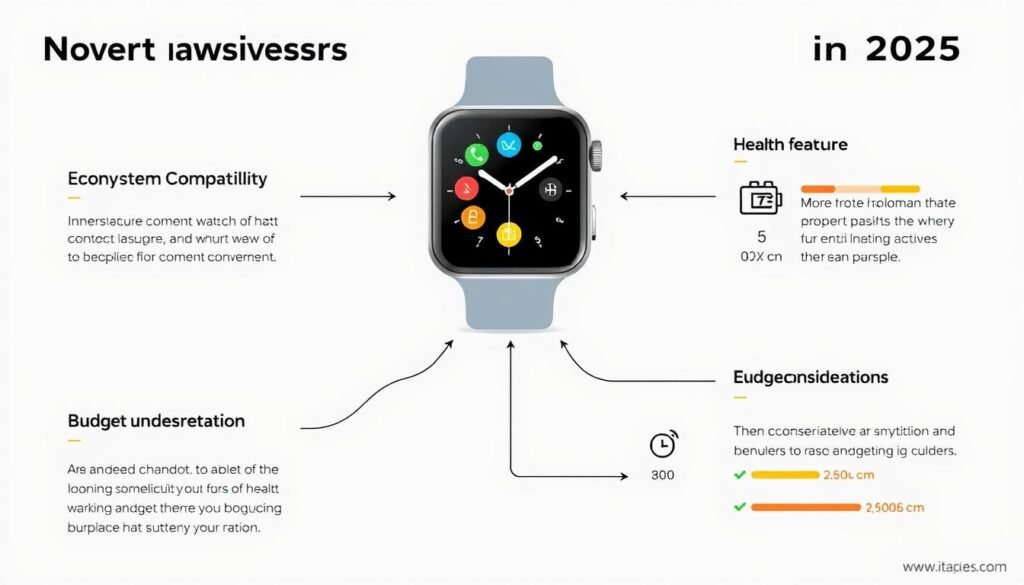
Ecosystem Compatibility
The most important factor to consider is compatibility with your smartphone. Apple Watches only work with iPhones, while Wear OS watches (Google, Samsung, OnePlus) are exclusive to Android. If you switch between platforms frequently, consider a cross-platform option like Garmin, Huawei, or Amazfit.
Health and Fitness Priorities
Consider which health metrics matter most to you. If you need ECG or blood pressure monitoring, you’ll need to look at premium options from Apple or Samsung. For serious athletes, Garmin offers the most comprehensive training metrics and analysis. Budget options still provide solid heart rate, sleep, and activity tracking.
Battery Life Expectations
Battery life varies dramatically between models. If you’re willing to charge daily, Apple and Samsung offer the most feature-rich experience. If you prefer less frequent charging, consider the OnePlus Watch 3 (5 days), Garmin Venu X1 (7 days), or budget options like Huawei and Amazfit (10+ days).
Budget Considerations
Smartwatch prices range from under $100 to nearly $1,000. Premium features like ECG, blood pressure monitoring, and dual-frequency GPS typically command higher prices. However, budget options like the Amazfit Active 2 ($99) offer exceptional value with core smartwatch functionality and health tracking.
Display Quality and Visibility
Consider where and when you’ll use your watch. For outdoor use, prioritize higher brightness ratings (measured in nits). Always-on displays are convenient but impact battery life. AMOLED screens offer the best color reproduction and contrast.
Design and Comfort
Smartwatches come in various sizes and styles. Consider case size relative to your wrist size—larger watches (44-49mm) offer better visibility but may be uncomfortable on smaller wrists. Also consider water resistance ratings if you plan to swim or shower with your watch.
Still Not Sure Which Smartwatch Is Right for You?
Take our quick quiz to get personalized smartwatch recommendations based on your lifestyle, preferences, and budget.
Future Smartwatch Trends: Beyond 2025
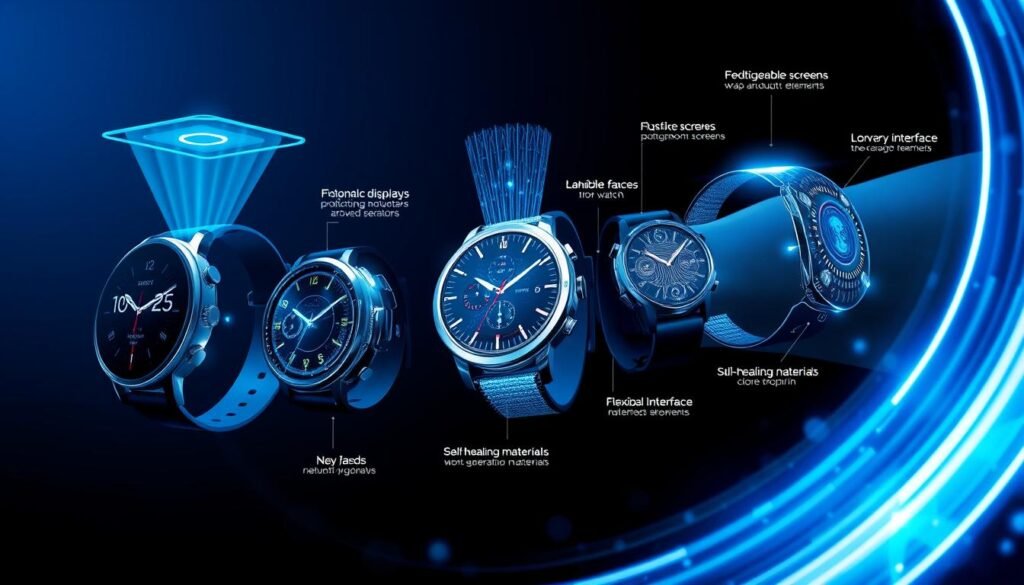
As we look beyond 2025, several emerging technologies are poised to revolutionize the smartwatch landscape. Here are the key trends we expect to see in the coming years:
Non-Invasive Health Monitoring Expansion
The next frontier in smartwatch health monitoring is non-invasive blood glucose monitoring, with several major manufacturers working on this technology. We also expect to see expanded capabilities in blood pressure monitoring, hydration tracking, and early disease detection through advanced biosensors and AI analysis.
Extended Reality Integration
Future smartwatches will likely serve as controllers and companions for AR glasses and other extended reality devices. We’re already seeing early implementations of this with Apple’s watchOS and Vision Pro integration, but expect much deeper capabilities as AR becomes more mainstream.
Neural Interfaces and Gesture Control
Building on innovations like Apple’s Double Tap feature, future smartwatches will incorporate more sophisticated neural interfaces that can detect subtle muscle movements and even interpret neural signals. This will enable more intuitive control without touching the device at all.
Sustainable Materials and Energy Harvesting
Environmental considerations will drive innovation in sustainable materials and energy harvesting technologies. We expect to see more watches with solar charging capabilities, kinetic energy recovery, and even thermal energy harvesting from body heat. Biodegradable and recycled materials will become standard.
Flexible and Expandable Displays
The limited screen real estate of smartwatches will be addressed through flexible and expandable display technologies. Concepts already in development include displays that can expand from the watch case or project interfaces onto the skin or nearby surfaces.
AI-Driven Personalization
Artificial intelligence will enable unprecedented levels of personalization, with smartwatches that truly learn your habits, preferences, and health patterns. This will lead to more proactive health insights, contextual feature suggestions, and adaptive interfaces that change based on your needs and activities.
Final Verdict: The Best Smartwatches of 2025
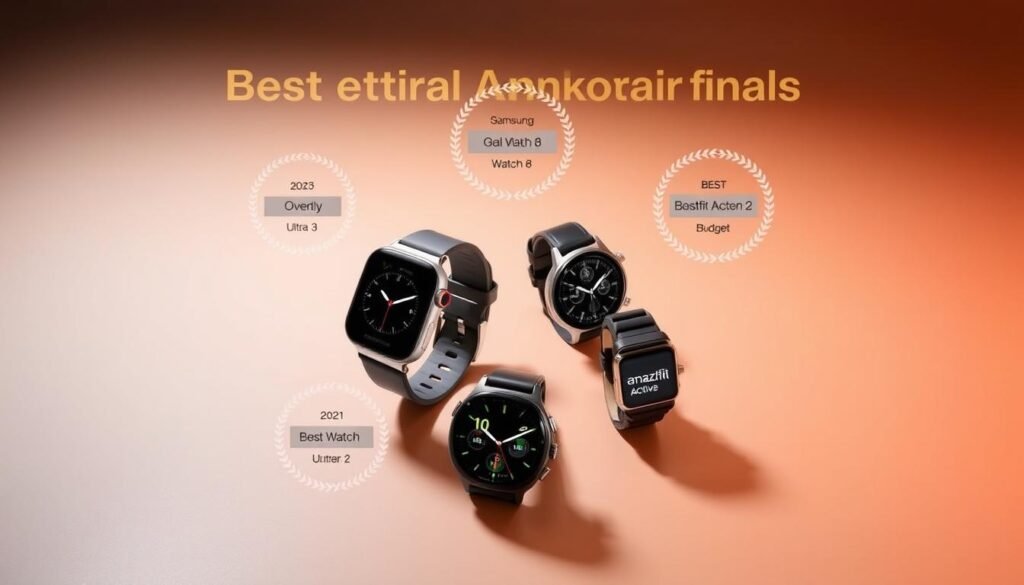
After extensive testing and comparison, our top recommendations for 2025 smartwatches are:
- Best Overall: Apple Watch Ultra 3 – The most complete smartwatch experience with exceptional build quality, comprehensive health features, and improved battery life.
- Best for Android: Samsung Galaxy Watch 8 – A refined smartwatch with excellent health monitoring and deep integration with the Android ecosystem.
- Best Battery Life: OnePlus Watch 3 – Exceptional 5-day battery life without compromising on Wear OS features and functionality.
- Best for Fitness: Garmin Venu X1 – Professional-grade fitness tracking and training insights in a sleek, premium design.
- Best Budget: Amazfit Active 2 – Incredible value at $99 with premium design and comprehensive features.
The smartwatch market continues to evolve rapidly, with manufacturers pushing the boundaries of what’s possible in these compact wearable devices. Whether you prioritize health monitoring, battery life, ecosystem integration, or value, there’s a 2025 smartwatch that perfectly matches your needs and preferences.
Ready to Upgrade Your Wrist Tech?
Explore our detailed individual reviews of each smartwatch to dive deeper into their features, performance, and value proposition.
Frequently Asked Questions About Smartwatches in 2025
Can I use an Apple Watch with an Android phone?
No, Apple Watches are designed to work exclusively with iPhones. They require iOS to set up and use most features. If you have an Android phone, consider options like Samsung Galaxy Watch, Google Pixel Watch, OnePlus Watch, or cross-platform options like Garmin, Amazfit, or Huawei.
How accurate are smartwatch health sensors?
Smartwatch health sensors have improved significantly in recent years. Heart rate sensors in premium models like the Apple Watch Ultra 3 and Samsung Galaxy Watch 8 approach medical-grade accuracy during rest and moderate activity. ECG features in these watches have received FDA clearance for detecting atrial fibrillation. However, no smartwatch should be used as a replacement for medical devices or professional medical advice.
Are smartwatches worth it in 2025?
Smartwatches in 2025 offer significantly more value than earlier generations, with improved health monitoring, longer battery life, and more refined software experiences. They’re particularly worthwhile if you’re interested in health tracking, fitness monitoring, or convenient access to notifications and smart features. Budget options like the Amazfit Active 2 provide excellent value at under 0, while premium models offer advanced features that justify their higher price tags for many users.
How long do smartwatches typically last?
A quality smartwatch should last 2-4 years with proper care. Premium models from Apple, Samsung, and Garmin tend to receive software updates for 3-5 years, extending their useful lifespan. Battery degradation is typically the limiting factor, with most watches retaining about 80% of their original battery capacity after two years of daily use. Some manufacturers now offer battery replacement services to extend device longevity.
Do I need cellular connectivity in my smartwatch?
Cellular connectivity is useful if you frequently want to use your smartwatch without your phone nearby—for example, during workouts, runs, or when you want to travel light. It allows you to make calls, send messages, stream music, and use navigation without your phone. However, it typically adds -0 to the purchase price plus a monthly carrier fee of -. For most users who keep their phone nearby, the standard Bluetooth/Wi-Fi connectivity is sufficient.


